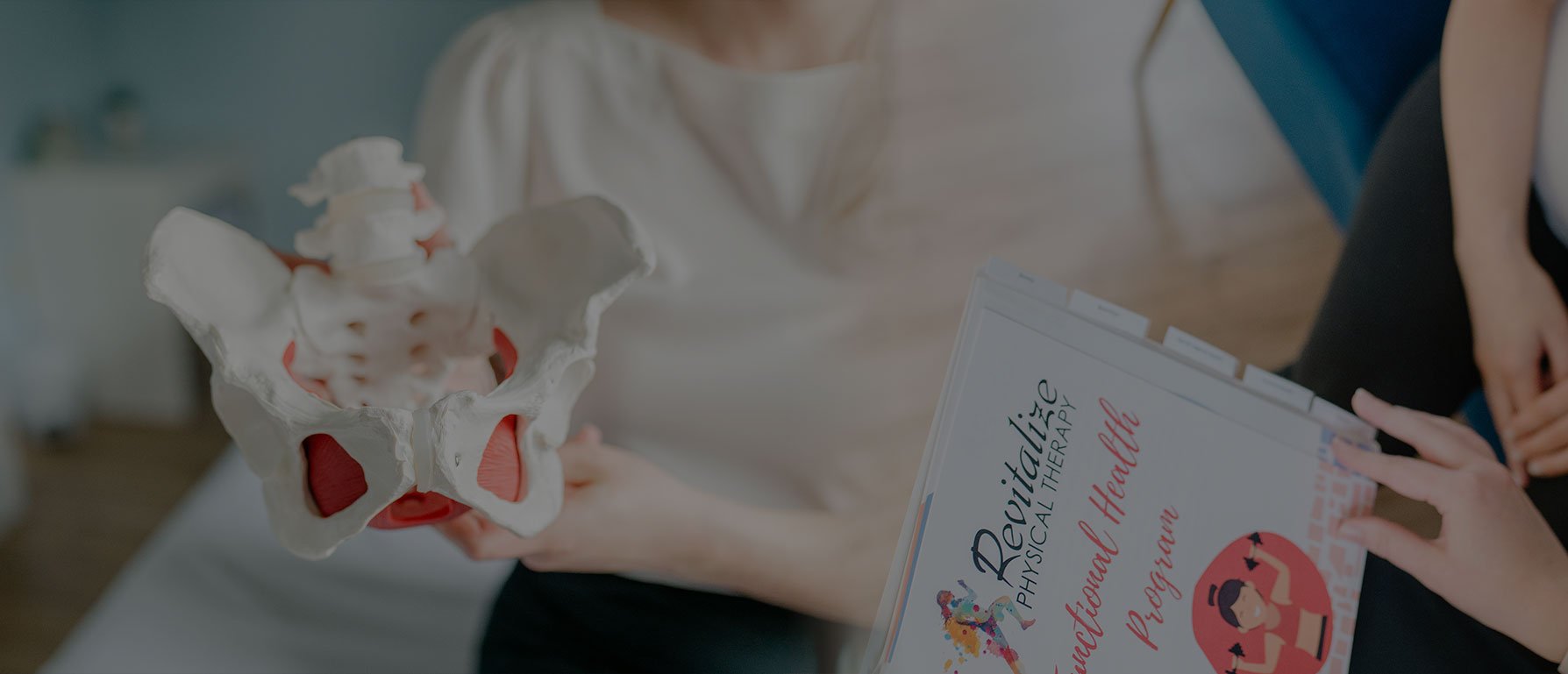
Enhancing Women's Health: Pelvic Floor Dysfunction, Physical Therapy, and Pelvic Floor Stretches
Pelvic floor dysfunction can significantly impact women's health, affecting urinary, sexual, bowel, and psychological well-being. Recognizing the symptoms, seeking timely medical intervention, and exploring appropriate treatment options can help women regain control over their pelvic floor function, leading to improved health, confidence, and quality of life.
- Introduction
- Enhancing Women's Health: Pelvic Floor Dysfunction, Physical Therapy, and Pelvic Floor Stretches.
- The Pelvic Floor: An Overview
- Recognizing the Symptoms Of Pelvic Floor Dysfunction
- Diagnosis of Pelvic Floor Dysfunction
- Treatment Options for Pelvic Floor Dysfunction
- How Pelvic Floor Dysfunction Can Affect Women’s Fertility
- Pelvic Floor Stretches If You Have Pelvic Floor Dysfunction
- Enhancing The Quality Of Life through Treatment

Enhancing Women's Health: Pelvic Floor Dysfunction, Physical Therapy, and Pelvic Floor Stretches.
Pelvic floor dysfunction is a condition that can have a profound impact on women's overall health and well-being, affecting various aspects such as urinary, sexual, bowel, and psychological functions. Recognizing the symptoms, seeking timely medical intervention, and exploring appropriate treatment options are key steps in regaining control over pelvic floor function and improving health, confidence, and quality of life. In addition to pelvic floor physical therapy, incorporating pelvic floor stretches can provide further support in managing this condition effectively.
The Pelvic Floor: An Overview
The pelvic floor consists of a network of muscles that support and stabilize pelvic organs. In individuals with pelvic floor dysfunction, these muscles may struggle to perform their functions effectively. The pelvic floor includes the anal sphincters, which control bowel movements, and the muscles supporting the bladder, uterus, vagina, and colon. It is vital to understand that the pelvic floor muscles play a significant role in urinary and bowel control, as well as sexual function.
Recognizing the Symptoms Of Pelvic Floor Dysfunction
Urinary Incontinence
One of the common symptoms of pelvic floor dysfunction in women is urinary incontinence, which can be disruptive and embarrassing. In addition to determining and treating the root cause, pelvic floor stretches can help strengthen and relax the pelvic floor muscles, enhancing their ability to support the bladder and control urinary function. Practicing targeted stretches, such as the butterfly stretch or deep squats, can contribute to improved muscle tone and coordination. It is important to also consider pelvic floor relaxation.
Pelvic Organ Prolapse
Pelvic floor dysfunction can contribute to pelvic organ prolapse, leading to discomfort and difficulties with bowel movements. While medical interventions may be necessary in severe cases, incorporating pelvic floor stretches and manual treatments targeting the supporting ligaments can play a supportive role in maintaining the strength and integrity of the pelvic floor muscles. Stretches like the child's pose or the happy baby pose can help stretch and relax the pelvic floor muscles, promoting better support for the pelvic organs.
Sexual Dysfunction
Pelvic floor dysfunction can impact sexual function, causing pain during intercourse, decreased satisfaction, and a loss of desire due to increased muscle tension of the pelvic floor muscles. Alongside pelvic floor physical therapy, pelvic floor stretches can be beneficial in improving blood flow, reducing muscle tension, and enhancing relaxation in the pelvic area. Stretches such as the supine bound angle pose or the cat-camel stretch can help release tension and promote flexibility in the pelvic floor muscles, potentially improving sexual function and comfort.
Chronic Pelvic Pain
Chronic pelvic pain, often associated with pelvic floor dysfunction, can significantly affect daily life. Incorporating pelvic floor stretches as part of a comprehensive treatment plan can help alleviate tension and tightness in the pelvic floor muscles, providing relief from pain and discomfort. Stretches like the kneeling lunge or the deep squat can help stretch and release tension in the pelvic region, promoting relaxation and improved muscle function.
Impact on Bowel Function
Pelvic floor dysfunction can lead to difficulties with bowel movements, such as chronic constipation or incomplete evacuation. In addition to medical interventions, pelvic floor stretches can contribute to better bowel function by promoting improved muscle coordination and relaxation. Stretches like the supine twist or the wide-legged forward fold can help release tension and improve flexibility in the pelvic floor muscles, potentially easing bowel-related symptoms.
Psychological Impact
Dealing with the physical symptoms of pelvic floor dysfunction can take a toll on a woman's mental health. Incorporating pelvic floor stretches as part of a self-care routine can provide a sense of empowerment and control over one's health. Engaging in stretches that promote relaxation, such as deep breathing exercises combined with gentle pelvic floor stretches, can help reduce stress, anxiety, and promote overall well-being.
Diagnosis of Pelvic Floor Dysfunction
To diagnose pelvic floor dysfunction, healthcare professionals rely on various methods, including:
Medical history: Detailed information about the patient's symptoms, medical history, and lifestyle factors is collected to evaluate potential causes and contributing factors.
Physical examination: Internal and external examinations are conducted to assess the strength, muscle tension, and coordination of the pelvic floor muscles.
Other specialized tests: Additional tests, such as uroflowmetry (measuring urine flow) or defecography (X-ray imaging during bowel movements), may be performed to assess specific aspects of pelvic floor dysfunction.
Treatment Options for Pelvic Floor Dysfunction
The treatment approach for pelvic floor dysfunction depends on the severity of symptoms and individual circumstances. Some common treatment options include:
Pelvic floor physical therapy
Physical therapy is a valuable treatment option for pelvic floor dysfunction. A pelvic floor physical therapist specializes in assessing and addressing pelvic floor muscle issues. Through personalized treatment plans, they help individuals regain control and strength in their pelvic floor muscles.
Physical therapy techniques for pelvic floor dysfunction may include pelvic floor muscle exercises, biofeedback training to improve muscle coordination, manual therapy to release muscle tension, and stretches to enhance flexibility.
These interventions aim to alleviate symptoms, improve bladder and bowel function, enhance sexual well-being, and restore overall pelvic floor health. Working with a pelvic floor physical therapist can empower individuals to manage their condition and improve their quality of life.
Behavioral modifications
This may include adopting healthy bowel habits, such as regular bowel movements and avoiding straining, as well as managing fluid intake and bathroom schedules.
Medications
Some people may get relief from using medications such as muscle relaxants or pain management medications in order to alleviate pain and tension from overactive pelvic floor muscles.
Surgical interventions
In severe cases of pelvic organ prolapse, surgical procedures may be recommended to provide adequate support to the pelvic organs.
Lifestyle adjustments
Adopting lifestyle changes like maintaining a healthy weight, practicing relaxation techniques, and managing stress levels can contribute to improved pelvic floor function.
How Pelvic Floor Dysfunction Can Affect Women’s Fertility
Pelvic floor dysfunction can have a significant impact on women's fertility. The pelvic floor muscles play a crucial role in supporting the reproductive organs, maintaining proper alignment, and facilitating healthy blood flow to the pelvic region. When these muscles are weakened or dysfunctional, it can disrupt the reproductive process.
Pelvic floor dysfunction can lead to various fertility-related challenges. It may affect the uterus's ability to maintain a healthy environment for implantation and pregnancy. The compromised pelvic floor muscles can also contribute to pelvic organ prolapse, which may interfere with the proper positioning of the uterus and hinder conception.
Additionally, pelvic floor dysfunction can cause pain and discomfort during sexual intercourse, leading to decreased sexual satisfaction and reduced frequency of intercourse, which can impact a couple's chances of conceiving.
Addressing pelvic floor dysfunction through physical therapy and other appropriate interventions can help improve fertility outcomes. Seeking timely medical attention and working with healthcare professionals experienced in pelvic floor rehabilitation can provide women with the necessary support to enhance their fertility and reproductive health.
Pelvic Floor Stretches If You Have Pelvic Floor Dysfunction
Stretching exercises can be beneficial for individuals with pelvic floor dysfunction. It's important to note that stretching should be done under the guidance of a pelvic floor physical therapist to ensure proper technique and avoid exacerbating symptoms. Here are a few examples of stretches that may be included in a pelvic floor stretching routine:
Butterfly Stretch
Sit on the floor with your knees bent and the soles of your feet touching each other. Gently press your knees toward the ground while maintaining an upright posture. Hold the stretch for 30 seconds to 1 minute, focusing on relaxing the pelvic floor muscles.
Happy Baby Pose
Lie on your back and bring your knees toward your chest. Hold the outer edges of your feet with your hands and gently pull your knees downward. This stretch helps relax the pelvic floor and inner thigh muscles. Hold the position for 30 seconds to 1 minute.
Deep Squat Stretch
Stand with your feet shoulder-width apart and slowly lower yourself into a deep squat position. Use your hands for support by placing them on the ground in front of you. Allow your knees to gently press outward, keeping your heels on the floor. Hold the stretch for 30 seconds while focusing on relaxing the pelvic floor muscles.
Seated Forward Fold
Sit on the floor with your legs extended in front of you. Slowly lean forward from your hips and reach toward your toes. Try to maintain a neutral spine and avoid rounding your back. Hold the stretch for 30 seconds to 1 minute, focusing on releasing tension in the pelvic floor muscles.
Enhancing The Quality Of Life through Treatment
Effective management of pelvic floor dysfunction can significantly enhance an individual's quality of life by improving urinary, bowel, and sexual functions. Seeking professional medical help, discussing symptoms openly, and following recommended treatment plans are crucial steps in addressing pelvic floor dysfunction and regaining control over these essential bodily functions.
Pelvic floor dysfunction can significantly impact women's health, affecting urinary, sexual, bowel, and psychological well-being. Recognizing the symptoms, seeking timely medical intervention, and exploring appropriate treatment options can help women regain control over their pelvic floor function, leading to improved health, confidence, and quality of life.
In-Person Initial Consultation
Unsure if we will be the best fit for you and want to know what it would take to get better? Apply for an initial consultation to discuss your issues, have them assessed and then receive a treatment plan.
Apply Now

